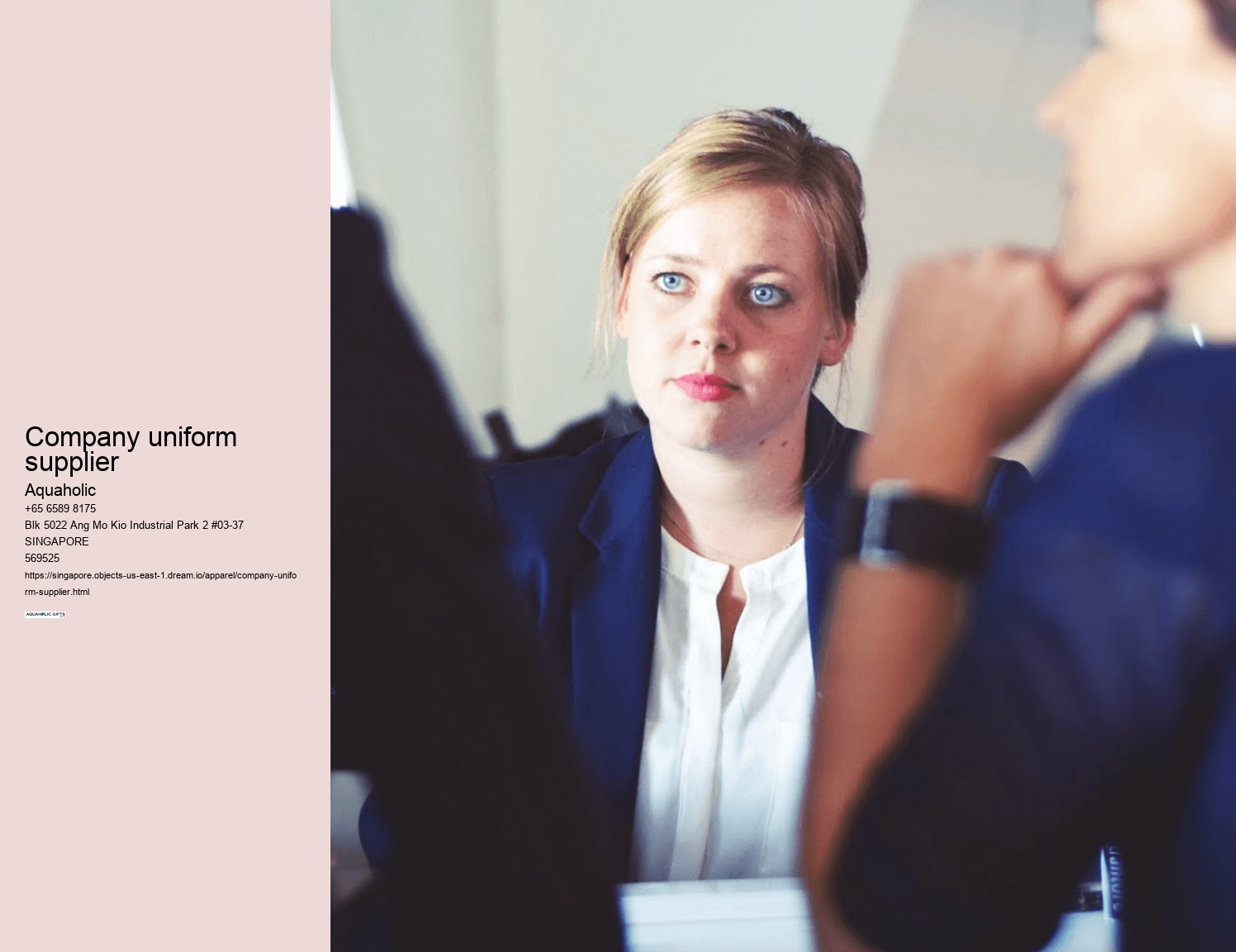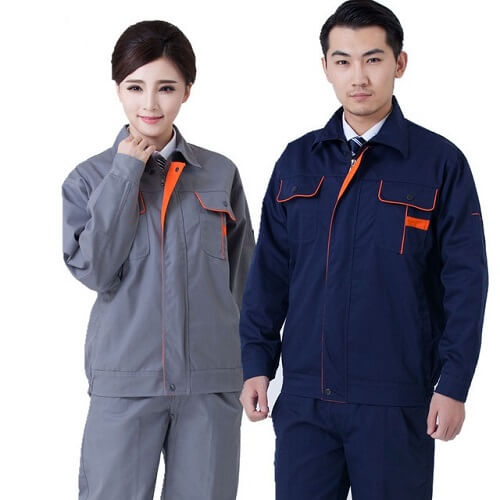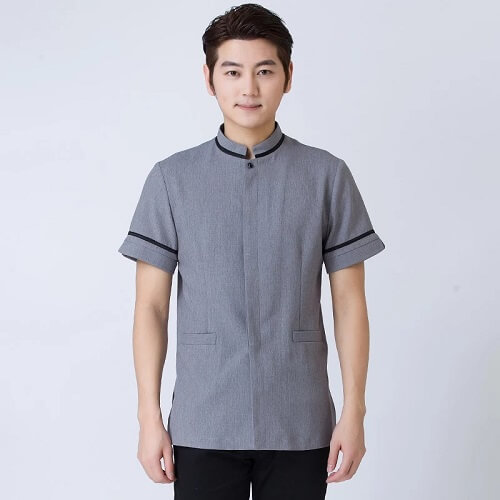
The fabric of your corporate wear plays a monumental role in this decision. By incorporating a dash of style and fashion-forward styles into uniforms will make them more appealing. Selecting the appropriate fabric is similar to choosing the primary ingredient for the perfect dish.
The fabric you choose to clothing plays an important factor in the selection. Because it’s breathable, durable, and presents itself with a crisp elegance that suits the corporate world perfectly.
Understanding the physical demands of a job is essential in uniform design. The main objective is to create uniforms that the wearer feels comfortable in, and enables them to carry out their duties effortlessly and with confidence.
Why choose to settle for the same fabric when you could get a blend? But, wool is also a fabric with flexibility, allowing more comfort in warmer temperatures by wicking sweat away off the human body.
In less formal settings where the atmosphere is a bit relaxed, blends and synthetics might make a confident appearance. Imagine you are wrapped in warmth during the harsh winter months. They are the undiscovered heroes, offering affordability along with the durability you expect from.
It's about creating a harmony that combines both elements in a choral of branding expression. A uniform that has a well created logo doesn't just cover the body but also encases one in the image of the brand, making the wearer into an ambassador for the business.
Anchoring your logo on the chest is like positioning it at the heart of visibility. Let's explore the mysteries of selecting the appropriate fabric that will work with a variety of workplace environments and the weather conditions.
Remember, a happy employee is a productive and happy one! Being ahead of the curve helps in navigating through the competitive seas with foresight and readiness.

In more casual settings, where the environment is more informal blended and synthetics can create a stylish appearance. They are a second skin that could help or hinder performance. It would be a tiring, exhausting day, wouldn't you think?
It's similar to putting an flag on the top of a mountain and claiming the territory for your company. Why? because it's breathable, strong and has a sleek style that matches the corporate world to a T.
If a logo is flawlessly in this canvas, it creates an amazing display of visual appeal. The design should be flexible and ensure that the wearers feel comfortable even in the most extreme environments.
Cotton is able to adapt well to different conditions, keeping you cool during the scorching summer months and also acting as an excellent insulation in winter. However, how do we achieve an equilibrium between fashion professionalism, comfort, and style when it comes to uniforms?
In casual settings in which the mood is casual blended and synthetics can create a stylish appearance. Uniforms are much more than clothes. In the odyssey of logo incorporation, comfort and durability are the unsung heroes.
They harmonize the benefits of natural and synthetic fibers, providing a balanced option for fluctuating climates. Fabric is the ocean on which the vessel of your logo is sailing.
Or perhaps a poly-cotton blend for durability? Is it cotton for its air-flow?
The cut and the fit are not only about fashion but are crucial to wearers' physical comfort and overall experience. Colors guide emotions, while fonts guide perceptions.

Giving room for slight variations will allow wearers to feel an identity while adhering to a more uniform code. In an age where first impressions matter, uniforms play an important role in displaying the brand's image. It's just like choosing the direction of wind for smooth sailing.
Why walk the extra mile to customize uniforms?
Blending the strengths of several materials, blends such as cotton-polyester provide durability, wrinkle resistance and breathable. A logo that is too big could obscure the uniform's design, whereas the wrong size could cause it to be look like it's been tossed away in the sea. But how do you navigate through the seas of design, color, placement, and style to ensure that your brand not only survives but thrives in the competitive wilderness?
It's about launching with solid design, wading through the various options for dimensions, layout and material, as well as making sure your brand's image is firmly on the hearts of your customers. Colors are not merely a design afterthought.
There are many dimensions and body shapes so the design and fitting of a uniform ought to be able to accommodate the diversity. Patches and badges can be powerful symbols of achievement, recognition, or affiliation.
They ensure that the uniform remains a reliable vessel for your brand’s voyage. A uniform must allow the skin to breathe, absorb sweat, and be enduring enough to withstand daily wear and tear.
We must not forget our feet! It's all about achieving a harmonious harmony in which both elements are joined in a choral of branding expression. The captain is placed in the place of a logo's incorporation boat.
In the maze of fabrics selecting one that is in tune with the environment and the formality of work is a skill we can master today. Who says uniforms have to be bland and boring?
Is it worth the hassle? In conclusion, designing a uniform is a multifaceted task.
The color selection will affect the comfort that the garment is wearing, particularly when it is exposed to various weather conditions. It could take the form of accessories or minor variations in the design elements.

Yes, most uniform suppliers in Singapore offer customization options. Businesses can select specific branding elements, such as logos, colors, and slogans, to ensure that the uniforms align with their unique brand identity.
When selecting uniform suppliers, businesses should consider factors such as the supplier's reputation, quality of materials, customization options, pricing, lead times, ethical manufacturing practices, and adherence to sustainability goals, if applicable.
When selecting a corporate uniform singapore supplier, businesses should consider factors like the supplier's reputation, quality of materials, customization options, pricing, lead times, and adherence to ethical and sustainable manufacturing practices.